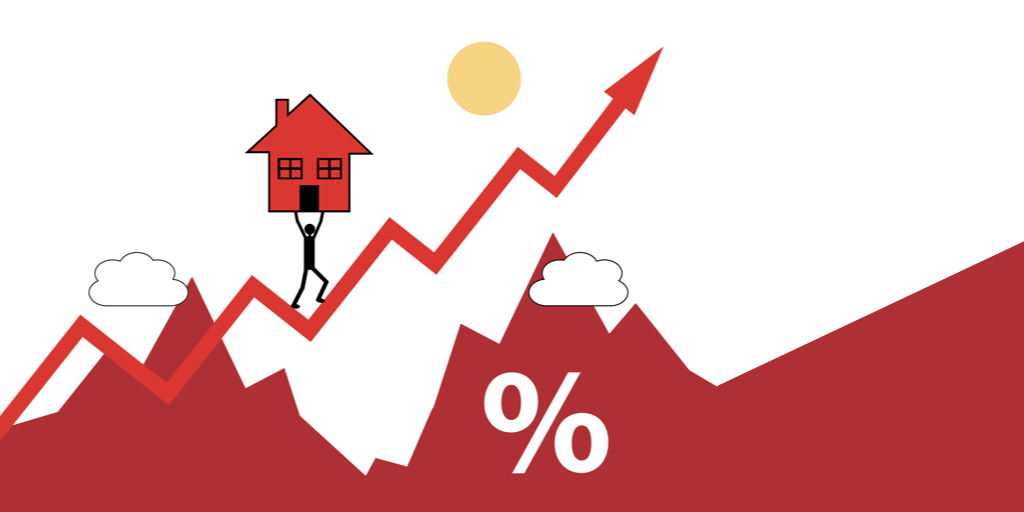Why the Fed is crushing the housing market
“The Fed will push until something breaks”. That’s been a popular line among economists and analysts according to a recent column in Fortune. That something is likely the U.S. housing market.
Since the Federal Reserve began hiking interest rates at an unprecedented pace mortgage purchase applications have fallen by 38%. But wait?! Don’t we have a housing shortage that will prop up today’s high home values? Not necessarily.
So what’s pushing home values down despite a lack of inventory? In two words it is demand destruction.
Read More
The average U.S. 30-year mortgage rate has more than doubled since the beginning of the year reaching 7.16% last week. Those with less than stellar credit may be paying closer to 8%. Some economists expect the average borrower may be paying 9-10% on a 30-year mortgage by the end of the first quarter of 2023. These rates have effectively squashed homebuyer demand with more potential buyers deciding to sit on the sidelines until either home values or interest rates fall significantly. However, there’s also a reduced demand for commodities, consumer goods, and homes that eventually will bring lower prices. In an inflationary market it’s hard to imagine we’ll see deflation, but that’s the natural result when the Fed reverses course and begins to enact quantitative tightening shrinking their balance sheet and mortgage-backed securities holdings, and pulling money from the economy. Despite numerous economic indicators, the fallout from the Fed’s repeated interest rate hikes has caught many by surprise. But in the end, the real-life impact will be lower median home sale prices which in turn will reduce home values in a given market. Markets such as Boise Idaho and Reno Nevada have already seen their median sales prices drop by 8% in just four short months! The median sales price in Austin Texas plummeted by 14% from May to August with the median price falling from $720,000 to $620,000. Older homeowners in these markets are unlikely to pull up stakes and move and thus they too will ride out what appears to be another housing recession. Those who may seek to get a reverse mortgage will see their potential loan proceeds squeezed by higher interest rates and lower home values, both of which reduce their principal limit factor or the percentage of the home’s appraised value eligible for the loan. Despite this tens of thousands of seasoned homeowners still could qualify and benefit from a reverse mortgage. The Fed has weighed the risks of unchecked inflation versus a recession and has found a recession is a more preferable and pragmatic approach. Bill McBride, the author of the economics blog Calculated Risk, told Fortune this summer, “The most frequent way we enter into recession is the Fed raises rates to fight inflation. The leading indicator for this type of recession is housing”. In conclusion, I expect the Fed to continue to hammer away at inflation with even more rate hikes, including a possible 75 basis point hike when the Fed meets this Tuesday and Wednesday. After all, it’s their last weapon against surging consumer costs. In the meantime, loan originators may want to research the markets in which they originate to determine which are less vulnerable to significant home price drops. Additional Reading:
Housing market activity is crashing—and it threatens to push the U.S. into recession just like it did in 1981 and 2008










4 Comments
Feds increasing rates is just starting to effect housing pricing. First thev3-5 days on market is now gone jumping to 30-45 suddenly. Second, the paying of $25k to $100k over asking is gonecwitgbmostvsaleescatvor below asking. I’m now seeing offfers of $50k below asking being accepted. Third sellers are pulling homes off markets. I had 11 possible HECM for purchases in my pipeline will all 11 electing to stay in their existing home and pull for sale signs down due tonnonofffers at a number they’ll acccept. They all say I don’t want to sell for less than I’m asking and I don’t want a high interest rate mortgage on my new home. They also saw their Principle limit drop from 45-50% of home price to 35% most often. This combination is hurting H4P sales as well as refinances at the same time.
Feds increasing rates is just starting to effect housing pricing. First the 3-5 days on market is now gone, jumping to 30-45 suddenly. Second, the paying of $25k to $100k over asking is gone, with most sales at or below asking prices today. I’m now seeing offfers of $50k below asking being accepted. Third sellers are pulling homes off markets. I had 11 possible HECM for purchases in my pipeline will all 11 electing to stay in their existing home and pull for sale signs down due to no or very low offers at a number they’ll not accept. . They all say I don’t want to sell for less than I’m asking and I don’t want a high interest rate mortgage on my new home. They also saw their Principle limit drop from 45-50% of home price to 35%. . This combination is hurting H4P sales as well as refinances at the same time. Overall forward mortgages in both refis and purchases are way Dow and Reverse is now feeling it too.
Mike,
While your statements seem plausible, many of us have no idea how to relate to what you are saying. A $50,000 reduction in a sales price has little relevance if it is on a property valued at $5 million or one that is overpriced by $60,000. A 45 day wait from putting the home on the market to sale is a good market historically. Things are out of balance when sellers have bidding wars. Now those who intentionally put their homes on the market at prices to create bidding wars will be less successful now than in recent history; that again is a normal market.
While HECM Refi endorsements historically have enormous volatility, H4P endorsements are rather constant. The annual fiscal year range for H4P endorsements is from about 2,300 to about 2,600 since 9/30/2014 for a percentage range of about 13%, while in the same 8 year period, HECM Refi endorsements have ranged from less than 1,700 to over 28,000 for a percentage range of about 1,647%. Of those who have committed to a H4P business model, few HECM originators have been successful.
Few HECM originators have closed 11 H4Ps since 9/30/2014. Yet you have lost that many since the Fed has started its current strategy of shrinking its balance sheet and raising interest rates? In what stage were those H4Ps lost in? Were they cleared to close? Were they proposals? Were they applications? Or were they somewhere in between those three?
Over the last 19 years, I have seen HECM Principal Limit Factors rise and fall. Some were initiated by FHA but most of the time they were merely the result of market conditions. It was fourteen years ago that the first HECM endorsement became part of the MMIF portfolio. In that 14 year period, the HECM program has seen dramatic changes. Life is full of change. Those who adjust, do best.
The housing industry is based not so much on the price of homes but more on the mortgage payments that borrowers can afford to spend on housing. While down payments come into play particularly for first time home buyers, in most cases for others they are a less difficult obstacle to overcome than the affordability of house payments. So as to the affordability issue, the Fed is indirectly reducing the demand for mortgages. The volume of reverse mortgages is so small as to not deserve discussion in this context, especially after looking at last month’s HECM endorsement volume.
As to shrinking its balance sheet, the Fed is creating a market place where mortgage bonds must be more competitive resulting in higher mortgage interest rates. Thus we see two ways that Fed policy is impacting the affordability of mortgage payments. Yet some opine that they see a weakening in at least the Fed strategy on increasing interest rates . Of course, one wonders if this is not the device of politicians who are helped by propagandizing this view just before an election.
Driving south from West Orange County CA on the 405 freeway to San Diego, there is a beautiful valley where in the right seasons, one can see several hot air balloons floating inland. The one thing that is sure about those flights is that the balloons will come down somewhere either by some combination of the efforts of its pilot and the action of nature itself. Rather than looking at our “flight” in this industry as taking place in a well designed jet that generally can make it to a destination with reasonable discomfort, the reverse mortgage industry feels more like a hot air balloon which is easily impacted by far too many forces than its originations can control.